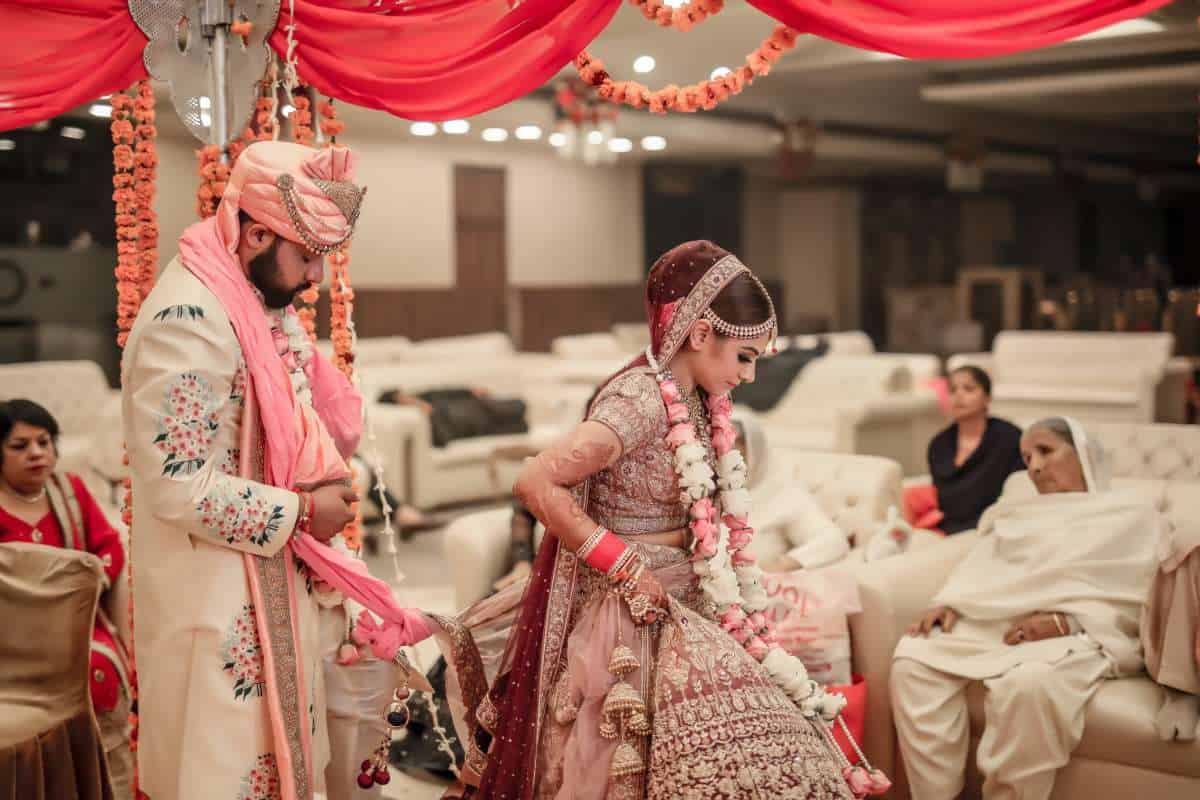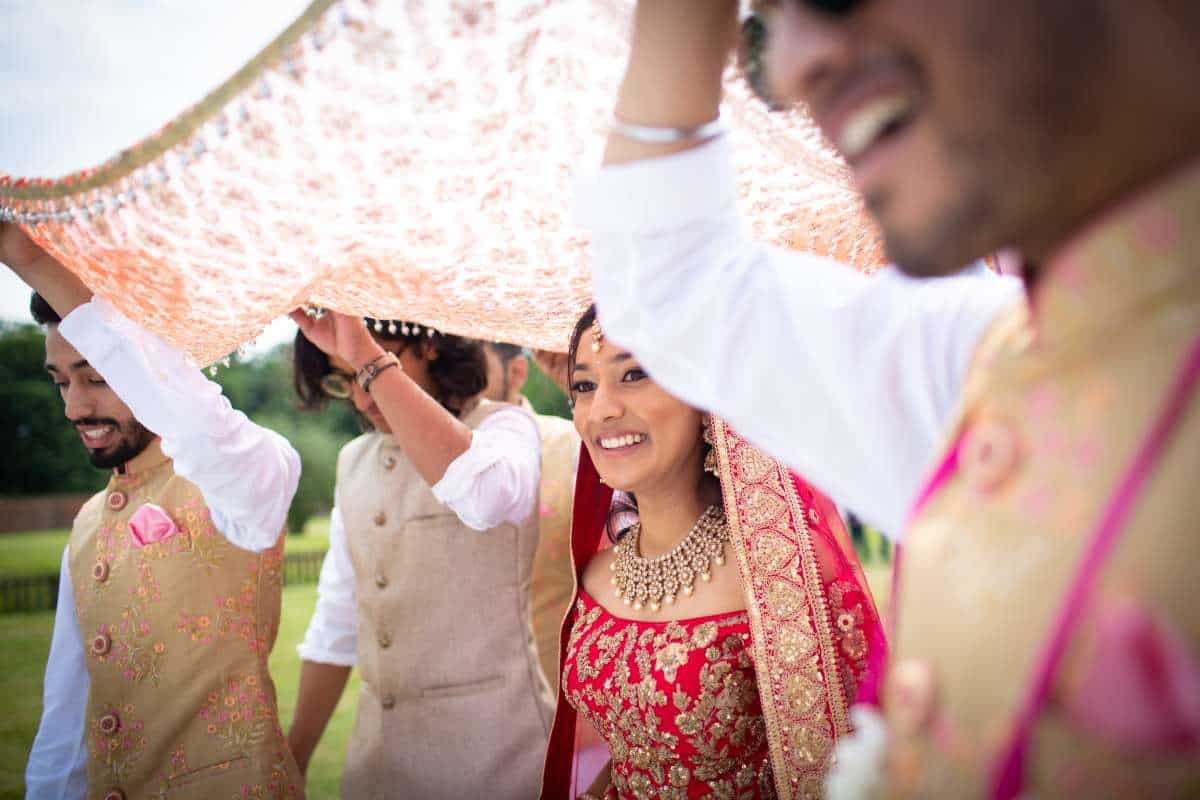Indian weddings are known for their vibrant celebrations, rich traditions, and sense of community.
Attending one can be a unique and memorable experience, especially for the first time. However, understanding the customs and etiquette is key to fully enjoying the event while respecting the cultural practices.
This guide will help you navigate everything from dress codes to rituals, ensuring you feel comfortable and prepared for the festivities.
Whether you’re attending a Mehendi, Sangeet, or the main wedding ceremony, following these etiquette tips will enhance your experience and allow you to appreciate the beauty and joy of an Indian wedding.
Let’s get straight to the point
Indian weddings are vibrant, multi-day celebrations filled with rituals, colourful attire, and social interaction.
Guests should dress in bright, festive clothes, avoiding black, white, or red, as these colours have specific cultural meanings.
Arrive on time, and feel free to participate in rituals if invited. Gifts, often cash in amounts ending in “1,” are customary.
Expect lavish food, and be mindful of religious customs, such as removing shoes in temples or covering heads during ceremonies.
Enjoy the music and dancing, and be prepared for multiple events over several days.
Indian Wedding Etiquette
Indian weddings are lively, colourful, and steeped in tradition, often stretching over several days.
For those attending an Indian wedding for the first time, understanding the customs and etiquette can help you fully enjoy the experience while respecting the culture.
Here’s a comprehensive guide to Indian wedding etiquette, covering everything from dress codes to rituals.
Dress Code: Bright And Festive
Indian weddings are known for their vibrant attire. Guests are encouraged to wear colourful, festive clothing that reflects the joyous atmosphere.
Women wear sarees, lehengas, or anarkalis, while men wear kurtas, sherwanis, or suits. If you’re more comfortable in Western attire, make sure it’s formal and bright.
Avoid wearing black or white, as these colours are traditionally linked to mourning. Red is also often reserved for the bride, so it’s best to avoid this colour unless told otherwise. Always check with the couple or their families about specific dress codes for each event.
The Importance Of Punctuality
Indian weddings feature multiple ceremonies, each with its own schedule. While some events might start later than planned, arriving on time is respectful, especially for key moments like the vows or religious rituals.
Some delays are expected due to the number of guests and the celebrations’ complexity, but punctuality is appreciated.
Participating In Rituals
Indian weddings are filled with rituals, such as the Baraat (the groom’s procession), the exchange of garlands (Jaimala), and the sacred fire ceremony (Havan or Agni). Guests are usually welcome to observe these traditions or participate when appropriate.
If you’re unfamiliar with a ritual, follow the family’s lead. You might be asked to offer blessings or witness important moments, like tying the mangalsutra (a necklace worn by the bride). Feel free to ask a family member for guidance if you are in doubt.
Gifting Etiquette
It is customary to bring a gift for the couple. Cash, often placed in an envelope, is a traditional and practical gift in Indian weddings. Giving amounts ending in 1 is common, like $101 or $501, as this is a sign of good luck.
If you prefer giving a physical gift, check with the couple or their families first. Some might have specific preferences or a gift registry, while others may appreciate traditional gifts such as sweets or home décor. Avoid gifting anything made from leather, as it’s considered inappropriate by many Indian households.
Food Etiquette
Indian weddings are renowned for their lavish food spreads, usually featuring multiple courses. Meals are often served buffet-style, though some weddings may have sit-down service.
The cuisine will likely be a mix of appetisers, main dishes, and desserts, with some events offering entirely vegetarian menus.
If you need to familiarise yourself with the dishes, ask for recommendations. Indian food can be spicy, so it’s acceptable to inquire about the heat level. Meals are typically vegetarian at religious ceremonies, so be mindful of dietary practices.
Respecting Religious Customs
Indian weddings are often religious, with rituals drawn from Hinduism, Sikhism, Islam, or Christianity. It’s important to follow the customs of the specific ceremony. For instance, shoes are often removed before entering temples or gurdwaras (Sikh places of worship).
Modest attire is usually required for religious ceremonies. Women may be asked to cover their heads with a scarf or dupatta at Sikh or Muslim weddings, and both men and women may be required to cover their heads during Hindu or Sikh ceremonies. Following these customs demonstrates respect for the families and their faith.
Social Interaction And Behaviour
Indian weddings are large, social events at which it’s common to meet the couple’s family members, friends, and colleagues. Greeting others with “Namaste” (hands pressed together) or “Salaam” (for Muslim weddings) is a respectful gesture.
Socialising is encouraged, and dancing is a significant part of the celebration, especially at the Sangeet (a pre-wedding music and dance night). Guests are invited to join the dancing, even if they’re unfamiliar with traditional Indian dances. It’s all about fun and participation.
Seating Arrangements
Seating arrangements at Indian weddings can vary. Some weddings have assigned seating, while others may have open seating, particularly at larger events. Certain areas might be reserved for close family members and elders during religious ceremonies.
If you need help determining where to sit, follow the directions of the event staff or family members. At the reception, seating might be more casual, allowing guests to sit where they feel comfortable.
Photography Etiquette
While many weddings encourage guests to take photos, it’s polite to check if there are any restrictions. Some couples or officiants may request no photos be taken during sacred rituals. If professional photographers or videographers are present, it’s best to let them handle capturing key moments.
If the wedding has an “unplugged” ceremony, guests are asked not to use their phones or cameras. Respect this request and focus on enjoying the event.
Be Prepared For Multiple Events
Indian weddings often span several days, with key events including the Mehendi (henna ceremony), Sangeet, wedding ceremony, and reception. Each event has its traditions, dress code, and customs, so be prepared for several days of celebrations.
Pace yourself to enjoy all the festivities. If you’ve been invited to attend multiple events, it’s a good idea to participate in as many as possible to show your support for the couple and their families.
Conclusion
Attending an Indian wedding is a unique and joyful experience, filled with rich traditions, vibrant celebrations, and heartfelt rituals. By understanding the basic etiquette—from dressing appropriately to participating in rituals—you can enjoy the festivities while respecting the cultural customs.
Indian weddings are all about joy, community, and togetherness. Whether participating in the rituals or joining the dance, embracing the event’s spirit ensures a memorable and enjoyable experience for you and the couple.
Frequently Asked Questions
What Are the Marriage Traditions in India?
Indian weddings are traditionally multi-day affairs, and involve many intricate ceremonies, such as the painting of the hands and feet of the bride called a mehndi. Garlands are presented to guests of honor instead of corsages, and lots of flower or rose petals are thrown for good luck.
What Is a Traditional Gift for an Indian Wedding?
Giving gifts is a common tradition at Indian weddings. The traditional wedding gift is money, which is regarded as the most thoughtful gift for the couple to start their lives together. This is better done by placing money in a pretty envelope or embroidered bag, along with your best wishes.
What Should Westerners Wear to an Indian Wedding?
Cleavage, dresses that don’t cover the knee or clothing that clings to your body is not acceptable for what to wear to an Indian wedding as a guest. For guys, long shirts and long pants are the most appropriate. Dressing conservatively is important, especially for religious ceremonies.
What Color Are You Not Supposed to Wear to an Indian Wedding?
Just like you wouldn’t wear white to a Western Wedding, at an Indian Wedding, you should avoid wearing the colors black and white. These colors can be seen as disrespectful since they are common colors when attending a funeral. Also, it’s polite to avoid wearing shades of red because the bride typically wears red.
What Should You Not Do at an Indian Wedding?
But try not to wear bright red, which is traditional reserved for the bride. Black and white colors should also be avoided as they are considered as colors of mourning or bad luck. Jewelries are also very important part of Indian outfits. Bindis and bangles are most common jewelries for Indian wedding guests.



